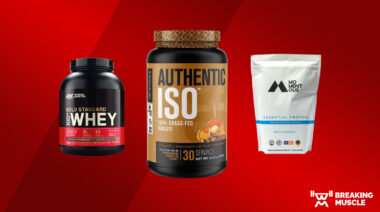If you’re on a budget, buying high-quality protein requires planning.
The demand for ethically raised animal products, like grass-fed, pasture-raised, wild-caught, and locally sourced meat and seafood, has drastically increased. This growing awareness is great, but it can also be expensive.
Here are my tips for getting the most quality and quantity from your protein while keeping a close eye on the dollars.
Minimize costs for high-quality meat by planning ahead.
1. Watch Your Portions
Meat and fish are often criticized for being unhealthy or environmentally taxing. Some studies have linked meat to cardiovascular disease or cancer. Fish gets a bad wrap due to pollutants and over-fishing in the seafood industry. These concerns matter. And cutting back on your portions is a good solution.
You don’t need a huge portion of protein at each meal. A 4oz serving of grass-fed beef provides about 25g of protein. A 6oz portion of wild-caught salmon equals 32g of protein. Cutting back to these portions may seem drastic, but you’d be surprised at how satisfied you can be when you fill your plate with other quality foods. Use a food scale to help you be objective.
2. Combine Animal Protein With Plant-Based Proteins
A big serving of animal protein leaves little room for plants. This is unfortunate, because they offer huge health benefits, big savings, and additional protein.
Quinoa, spinach, beans, chia seeds, and nuts are especially good sources. However, plant proteins are not complete, meaning they are missing a number of the nine essential proteins our bodies cannot produce. However, if you are also eating meat or seafood, you don’t need to worry about missing proteins. For example, let’s say you have 25g of protein from 4oz of grass-fed beef and 10g of protein from the plant foods on your plate. Not only are you getting a decent overall quantity of protein, but almost ¾ of the protein is from a high-quality and complete source.
3. Know When to Look for Sales
You can find great deals on fish, depending on the season. Wild-caught, sustainably raised, high-quality fish is usually flash frozen on the boat. This means it is extremely fresh when unthawed. Grocery stores often have inventory of fish that is still frozen when the new season comes into full swing, which means they will usually put the carryovers on sale.
“Even small steps will have a positive effect on the environment, your wallet, and your health.”
Over the summer, I was getting salmon and swordfish for $6/lb on some weeks. It depends on your grocer and the season. Ask a few questions about what their inventory is like and when they usually clean house.
4. Buy in Bulk
Grass-fed, pasture-raised beef, pork, or poultry is rarely on sale. For these meats, buying in bulk can be the best bet for savings. Perhaps there are local farms near you that offer bulk discounts. If you have the freezer space, this can save you as much as 30-40 percent as compared to grocery store prices. Frozen meat stays good in the freezer for at least six months, possibly more. Check with local butchers to see if they can get a large order at a better price, and go frozen.
5. Try Dried or Canned
For most of history, human beings didn’t have refrigerators. Preserving food is an art and a science. While drying and canning aren’t perfect, they do present a way to get high-quality protein at a decent price. Canned salmon and beef jerky are two good options. While the price per ounce can be high, you can buy them when on sale and they will last a long time. I saved 30 percent off of grass-fed beef jerky by buying twenty packs from a local farmer.
Canned or dried protein is also a solid backup for those times when you can’t find a good deal on fresh sources. Canned salmon is a great food to put in a salad or mix into a pasta dish. Jerky is useful for traveling or hiking.
Small Steps Lead to Big Change
The price tag for high-quality proteins can be daunting, but by planning ahead and shopping seasonally, you can do it for a reasonable price. Remember it isn’t an all-or-nothing thing. Even small steps will have a positive effect on the environment, your wallet, and your health.
You’ll Also Enjoy:
- Tips and Tricks for Healthy Eating on a Budget
- 3 Simple Slow Cooker Recipes for Easy Meal Prep
- The Cost of Eating Well: How to Eat Better for Less Money
- New on Breaking Muscle Right Now
Photos courtesy of Shutterstock.






